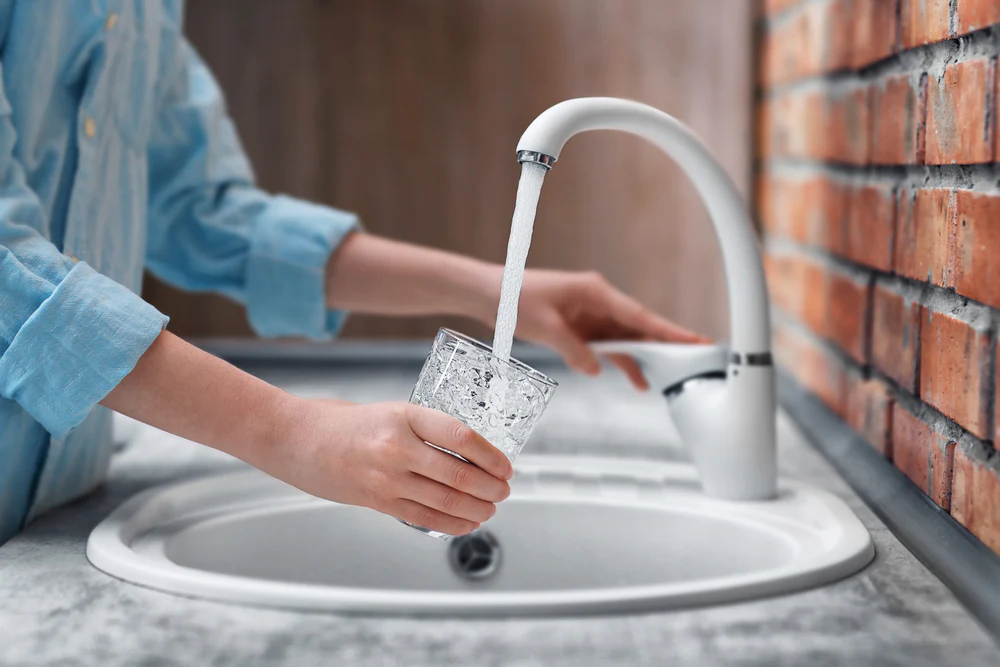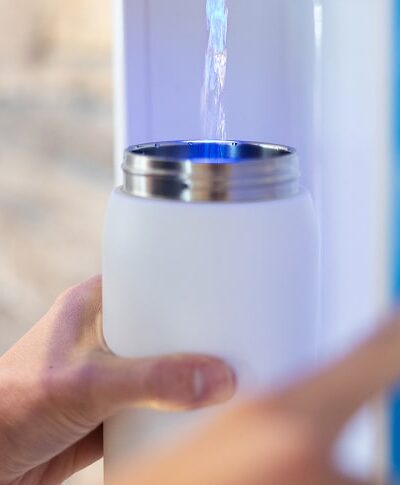Updated July 7, 2024
From UV light systems, to reverse osmosis water systems or a charcoal water filtration system, there are many ways to filter and purify drinking water. But what is purified water and how can you still get beneficial minerals in your pure water without the inorganic minerals, heavy metals, and harmful contaminants?
All purified drinking water has been filtered, but that doesn’t mean all water that’s been filtered is considered pure. Although similar in sentiment, there are significant differences between the two. Water sources have varying levels of filtration depending on if you’re drinking tap water, bottled water, or actual purified water. Actual purified water can remove many water imperfections such as bacteria, algae, fungi, parasites, metals, and chemical pollutants. By understanding the basics of water filtration, you’ll easily identify the difference between what is purified drinking water vs. filtered water. These are all essential things when looking for indicators of water quality.
Tap Water Filtration
Each municipality follows certain regulations for its tap water, which means water quality isn’t the same across the country. For example, California has faced water quality challenges in the past due to high levels of arsenic, nitrates, and other pollutants in its water system from agriculture.
The same kind of harmful contaminants, in addition to lead and radiation, have also affected Texas drinking water, making it harmful to drink. This is more common among rural areas since over half of the state’s water supply comes from groundwater that is contaminated by oil fields. Both states’ water supplies are also affected by saltwater, a factor that makes it unfit for human consumption if not filtered properly. These are only two examples of the various water sources and conditions that states face.
Each area has a different level of contaminants found in its tap water, which can be checked through the Environmental Working group’s website. The non-profit organization performs a quality analysis of drinking water of over 30 million state water records. Simply type in your zip code and it will show how many contaminants and which sources (including the U.S. Environmental Protection Agency) are used to gather data.
During the filtering process, contaminated water is subject to municipality standards, which are affected by age and condition of pipes and filtration systems. Despite the most stringent filtering process, trace contaminants and impurities are often still left behind. Knowing the facts can help you make smart decisions whether you are drinking tap water while pregnant or trying to decide if you want to invest in the best faucet filter.
Bottled Water Filtration
Many bottled water brands boast 99% filtration but at what cost to the consumer and to the planet? Plastic waste has been a rising environmental issue over the past decades as bottled water sales have increased. It takes hundreds of years for plastic waste to naturally decompose, which has caused landfill overflows and a direct negative impact on ocean life.
The FDA requirements are minimal when it comes to bottled water filtration information. While it must meet certain standards, the treatment method doesn’t need to be disclosed. Data is rarely readily available on the bottle itself and it may be hard to track down on a company’s website. For example, the standard of quality regulation sets a maximum level of contaminants that are allowed in bottled water and still be considered to drink.
In addition, while the water itself may be filtered, the chemicals from the plastic containers that hold it can be harmful especially in hotter temperatures. Most brands have made the switch to BPA-free water bottles to reduce the fear of chemical consumption from bottled water. However, a chemical called antimony is used to manufacture polyethylene terephthalate (PET), which is found in most bottled water available. In high doses and on hotter days, the chemicals in plastics can break down and contaminate the water. As you can see, the bottled water cost is more than just monetary.
FloWater’s Purified Filtration Systems
The water filter technology found in FloWater’s Refill Stations covers a seven-step filtration process to result in purified, safe drinking water that tastes crisp and refreshing. Each phase of filtration has its own purpose from removing trace chemicals and pollutants to adding electrolytes back to the now clean water for advanced hydration. This is why people are purchasing a purified water system for home as it ensures you only drink clean water.
Water purification is achieved through the first three filters: sediment, carbon, and advanced reverse osmosis. As the water progresses through each stage, dirt, dust, rust, and other impurities and contaminant that comes from tap water are removed. The carbon filter removes even smaller particles, such as chlorine and sulfide, which removes odors and unpleasant tastes. The third purification stage removes bacteria, lead, and other contaminants through advanced reverse osmosis. Between these first stages, the purification process is five times more efficient than anything else available.
In the next three stages, the water is sanitized via activated oxygen and improved through an alkaline enhancement of ten trace essential minerals. The alkaline filter also helps to neutralize the acid by balancing the pH levels of the water. This helps to relieve stress on the body. Then, the electrolyte filter adds in magnesium, sodium, calcium, and potassium to fortify the water.
The final step within the water purification system is the unique coconut carbon filter that absorbs any contaminants and odors to result in purified water that tastes fresh, crisp, and clean every time. This water purification method specifically shows the levels of filtration so you can feel confident you’re drinking the best-tasting and purest water available. The refill station also reduces plastic waste and promotes a healthier carbon footprint on the environment.
Experiencing The Purified Difference
Hydration is a concern for everyone, which means having a reliable, drinkable water source is key. Purified water is available through advanced technology that removes chemicals, contaminants, and other impurities that are often still found in tap water and from the production of plastic bottles. Knowing the difference between the different levels of filtered water vs. purified water can help you make a more favorable choice next time you drink water.
Sources:
- http://www.sacbee.com/news/state/california/water-and-drought/article211474679.html
- https://www.texastribune.org/2018/01/22/texas-drinking-water-contamination-problem-pronounced-rural-areas/
- https://www.ewg.org/tapwater/
- https://www.fda.gov/consumers/consumer-updates/bottled-water-everywhere-keeping-it-safe
- https://www.nationalgeographic.com/environment/2019/07/exposed-to-extreme-heat-plastic-bottles-may-become-unsafe-over-time/





